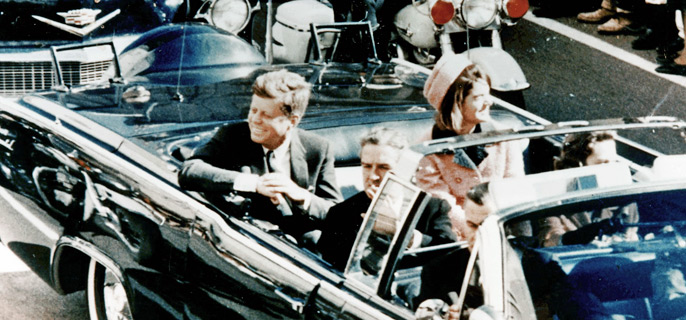
“From Dallas, Texas, the flash, apparently official: President Kennedy died at 1 p.m. Central Standard Time.”
Those words, spoken by CBS news anchor Walter Cronkite 50 years ago this week, announced to the American public that the president of the United States had been assassinated.
The shock of the events in Dallas a half century ago remains etched in the minds of Americans who were old enough to remember the assassination of the 46-year-old president – the youngest man ever elected to the presidency. His youth, energy and the challenges he placed on the public (“Ask not what your country can do for you, but what you can do for your country”) resulted in Americans holding him in high regard during his time in office and – more tellingly – in the decades since his death on Nov. 22, 1963.
Kennedy’s 70 percent average job approval rating for his 1,000 days in office is the highest of any president in Gallup’s history of measuring job approval of U.S. presidents. And since his assassination, his place in history, according to the American public, has only been enhanced. According to multiple polls, Kennedy is routinely listed as the best president in the past 50 years (Ronald Reagan is consistently ranked second in the same polls). A 2011 Public Policy Polling survey gives Kennedy a 74 percent favorable rating (Reagan is second with 60 percent); a 2010 Gallop poll puts Kennedy’s favorable rating at 85 percent; and a 2011 Angus Reid poll gives JFK an 80 percent favorable rating.
And yet, he was only in office for two years and 10 months, so what explains his enduring appeal? Surely, his assassination created a sense of martyrdom. But James Garfield and William McKinley were also assassinated, yet their untimely deaths have not enhanced their place in history. Clearly, there is more to Kennedy’s lasting popularity than his tragic death. He was, in many regards, the first modern president – he was the first president born in the 20th century and the first to effectively use television to get his message out to the American people. His youth, eloquence and good looks captivated the public. Away from the Oval Office, Kennedy’s casual style sense served as an example for American men – khakis, polo shirts and sunglasses replaced the Father Knows Best sweaters and button-down shirts that were de rigueur at the time.
Beyond the style, however, were the bold policies of the New Frontier. It wasn’t enough to match the Soviets’ launching of the Sputnik satellite into space. We were going to send a man to the moon and return him safely to the earth. Instead of fighting communism with tanks and missles, we would do it with America’s youth serving in the Peace Corps. Kennedy’s handling of the Cuban Missile Crisis remains, in the minds of most historians, a model for calm, detached crisis management.
His 1,000 days in office were not without their share of failures. The Bay of Pigs fiasco was fodder for those who felt Kennedy was too young and inexperienced for the nation’s top job, and his early reluctance to offend Southern Democrats by pushing for civil rights legislation disappointed many on the left.
But if JFK showed anything, it was a capacity for growth while in office and his assassination robbed the nation of seeing what might have been.
Fifty years after Dallas, Americans alive at the time still vividly recall where they were when they heard the incomprehensible news that John F. Kennedy was dead. Northeast Oregon Now asked area residents to share their memories of that day in November of 1963:
‘numb . . . and lost’

Eileen Laramore was a 14-year-old seventh grader at Armand Larive in November 1963. Her classroom was downstairs and she remembers her teacher, Carlisle Harrison, being interrupted in mid-sentence by the school intercom which cut in with a radio broadcast. Laramore, a longtime Hermiston resident, recalls the announcer was talking fast about a shooting in Dallas involving the president and the governor of Texas, John Connolly. There was a lot of noise and confusion in the background.
“Suddenly, I realized the announcer was saying that President Kennedy had been shot,” she said. “Mr. Harrison, his face very pale, stood frozen, looking up at the intercom speaker. I don’t remember anyone saying anything. We just sat – listening.”
Sometime later, the official word came that the president was dead. Laramore recalls the shock she felt when she heard the news.
“Numb – that’s what I felt,” she said. “Numb . . . and lost.”
‘an uncommon leader’
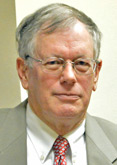
Hermiston attorney and City Councilor George Anderson was an 18-year-old freshman at Whitman College at the time.
“As I was leaving my dorm room someone told me President Kennedy had been shot,” says Anderson. “As I walked to class I reflected on what a tragedy that was. Later in the day I learned the rest of the story watching national news.”
Anderson said the nation lost a great leader with the death of President Kennedy and that people don’t appreciate leadership until it’s gone.
“The loss of President Kennedy helps verify that as he was succeeded by Lyndon Johnson, who made many blunders — tragically Vietnam,” Anderson says. “Kennedy was an uncommon leader, and I believe he would have guided this country better than President Johnson — especially in Vietnam.”
Anderson spent a year as a counter-intelligence advisor in Vietnam, six months of it with a small advisory team on the Cambodian border in a town of 700 Vietnamese and Montagnards. Anderson said the loss of lives suffered by GI’s, Vietnamese soldiers and civilians, Montagnard tribal people, Cambodians and Laotions was tragic and – perhaps – avoidable.
“Possibly if President Kennedy had survived, it could have been avoided or the carnage reduced,” he said. “But who knows?”
‘you suffer shock over a thing like that’
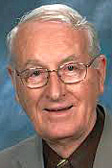
Harmon Springer was the general manager for KOHU/KQFM from 1966 to 1997, but on Nov. 22, 1963, he was 30 years old and was working for KRAN, a radio station in Morton, Texas, about 400 miles from Dallas. He had begun his radio broadcasting career a couple years earlier. Springer said KRAN was a similarly-sized radio station to KOHU and Morton was about half the size of Hermiston today.
He was working the noon news hour and the weather was hot – not unusual for Texas, even in November. He received a phone call from his wife with the news that Kennedy had been shot.
“She was at a friend’s home when it began flashing on TV and called me immediately, actually managing to reach me with the news a few seconds before I saw my United Press International newswire going berserk,” Springer recalls. “The newswire’s teletype machine was ringing continually (an alert sound reserved only for bulletins) and spitting out copy at a phenomenal rate.”
Springer said the news hit him hard.
“I was overwhelmed, nearly speechless,” he says. “I was ripping and reading newswire bulletins as fast as I could, all the while feeling like I had just been punched in the gut. I was alone at the station and the phone was ringing repeatedly. We were not a network station so I was also trying to listen to other stations in Lubbock and Amarillo on our Emergency Broadcast System monitor and hear developments.
Springer says the people of Texas were stunned – how could something like that happen in their own state?
“He was the president of the United States and he was murdered right there in plain sight,” Springer says. “You suffer shock over a thing like that.”
‘I knew I had lost something’
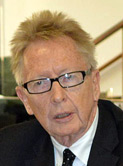
Like most Americans alive at the time, Hermiston City Manager Ed Brookshier remembers exactly where he was when he heard the news. He was a 17-year-old high school senior that day. Nov. 22 was a Friday and Brookshier was in class when he first heard the news.
“Later, we heard, ‘The president is dead . . . the president is dead’ over the school intercom,” Brookshier remembers. “I think it was the radio in the superintendent’s office transmitting the live radio transmission.”
For Brookshier, the news was incomprehensible.
“You’re 17 years old and the assassination of a president was something you read about in history books – you don’t live it,” he says.
The tragedy in Dallas was a personal one for Brookshier. He says Kennedy and his presidency stirred his early interest in public service and politics.
“Put simply, I believed in Camelot,” Brookshier says. Like Laramore, Brookshier says he felt numb.
“I am not generally a very emotional person and wasn’t then, either,” he says. “But I remember being numb for a long time. And I knew that I had lost something.”
‘utterly demolished’
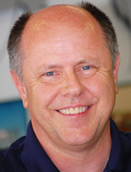
For Steve Meyers, his recollections of the events in Dallas 50 years ago center around the memories of his mother’s reaction. He was 10 years old and living in Echo in November 1963.
“I don’t remember much, except one thing – the look on my mother’s face when we came home early from Echo Elementary,” he says. “She was crushed, utterly demolished. The look on her face sticks with a kid for a long time.”
Meyers, who works at Umatilla Electric Cooperative, says it was years later before he learned about the details of the Kennedy assassination.
“All I know about the assassination is what I read later as an adult, and I’m still learning new things,” he said. “One thing I just found out – Lee Oswald realized the day before the assassination his wife was going to leave him, and he left his wedding ring behind when he went to work that morning.”
‘disbelief – then shock’
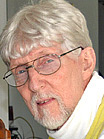
Bill Many grew up in Hermiston before moving to Pendleton where he owned and operated an electronics business. Manny was 27 years old and working in his shop when he heard the news.
“We had a TV on and we gathered around it to watch,” Manny recalls. “And we got no more work done that day.”
The 1954 Hermiston High School graduate said there were two distinct emotions he felt that day.
“Disbelief – then shock,” he said. Once the news was announced that the president had died, all three television networks suspended their regularly-scheduled programming and stayed on the air with any and all developments in the story through Monday, the day of Kennedy’s funeral. It was the first instance of live, 24-hour news coverage.
“That day and night were surreal,” Manny says.
‘it was so horrifying’

Karen Hutchinson-Talaski, a lifelong Hermiston resident, was 6 years old on Nov. 22, 1963. Like Meyers, her most vivid memories of that day are of her mother’s reaction.
“Mom had the television on when the news broke out that the president had been shot,” she remembers. “My mother burst into tears and, I think, my grandmother called her to talk to her about it because it was so horrifying.
“My little sister, Sally, who was 3, kept walking around the house saying, ‘President Kennedy has a headache’ over and over again.'” The emotions of her mother have stuck with Talaski all these years later.
“I remember being shocked that my mother would cry over someone she didn’t even know,” she says. “I remember my folks kind of walking around in a daze, probably like we all did when the planes hit the World Trade Center and the Pentagon on 9/11.”








